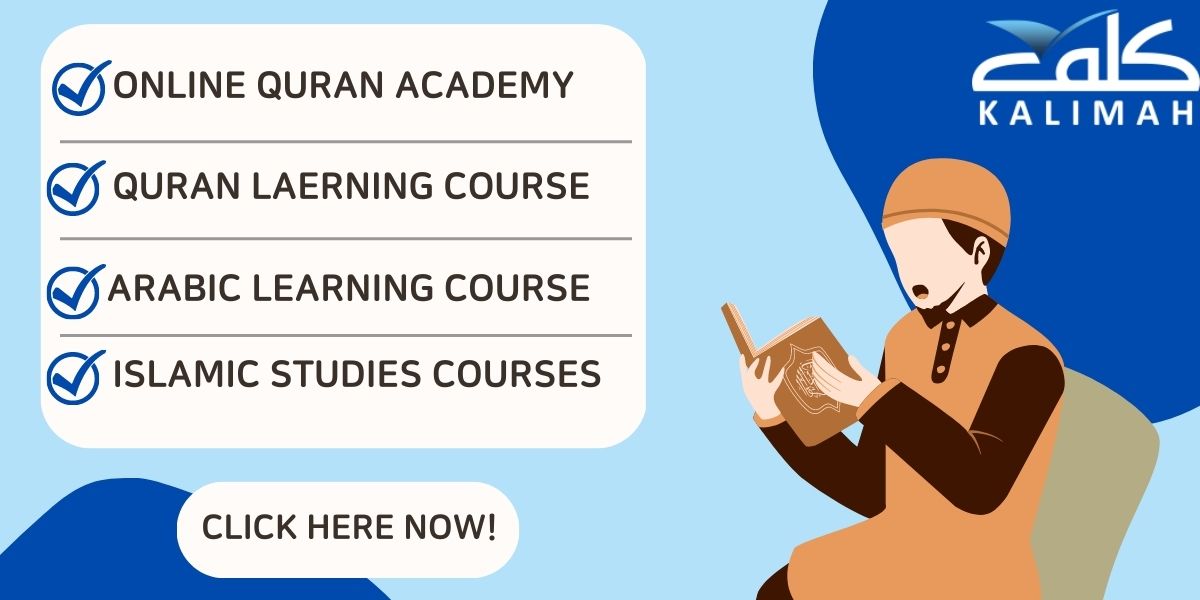In a nutshell: While both Arabic and Farsi share a script and historical ties, they are distinct languages from different families—Arabic being Semitic and Farsi Indo-Iranian. Arabic features a complex grammar system and is spoken by over 400 million people across 25 countries, making it essential for global communication and Islamic studies. Farsi, though rich in culture and literature, is more limited in geographic reach. If you’re seeking broader opportunities, Arabic is the way to go, while Farsi is perfect for those drawn to Persian heritage.
Welcome (أهلًا وسهلًا / خوش آمدید)! Today, I want to help you decide which language you should learn, Arabic or Farsi, by answering some important questions about both languages. We will explore if Farsi and Arabic are the same language, how they compare in many aspects, and which one is more valuable to learn for various reasons.
Is Farsi and Arabic the Same Language?
No, Farsi and Arabic are not the same language. Although they share some similarities—especially in the writing system—linguistically, they are very different.
The main difference between Arabic and Farsi lies in their language families and structures: Arabic is a Semitic language with a complex root-based grammar system, while Farsi (Persian) is an Indo-Iranian language with a more regular grammar and simpler verb patterns.
Arabic is spoken across many countries and is crucial for Islamic studies, whereas Farsi is primarily spoken in Iran and has a rich literary tradition.
Is Farsi an Arabic Language?
No, Farsi is not an Arabic language. Many people think Farsi is a type of Arabic because of the shared script, but they are two distinct languages.
Arabic has influenced Farsi heavily, especially in terms of vocabulary. After the Islamic conquest of Persia in the 7th century, many Arabic words entered the Farsi language, especially in areas like religion, law, and science. For example:
- The word كتاب (kitāb) in Arabic means “book.” In Farsi, it also uses the same word کتاب (ketāb) for “book.”
However, just because Farsi borrowed words from Arabic does not make it an Arabic language. Structurally and grammatically, the two languages operate very differently.
Farsi belongs to the Indo-Iranian branch of the Indo-European family of languages, while Arabic is a member of the Semitic language family.
Which One is Older: Farsi or Arabic?
Historically, Arabic is older than Farsi in its written form. The Arabic script has been used since the 4th century CE, while Farsi, in its current form using the Arabic script, has been around since the Islamic conquest in the 7th century. Before that, ancient forms of Persian existed, but they used different scripts like Old Persian cuneiform.
But if you are comparing spoken languages, both have ancient roots.

Why Do Arabic And Farsi Look Similar?
The confusion might come from the fact that both languages use a similar script. Farsi uses a modified version of the Arabic script, but the sounds, grammar, and vocabulary are different. So, just because you can recognize the letters in Farsi doesn’t mean you’ll understand it as you would in Arabic.
Both Arabic and Persian use the Arabic script, but Persian has four extra letters: پ (p), چ (ch), ژ (zh), and گ (g).
So, if you know how to read Arabic, you can read Persian, but you will see some new letters.

* The Arabic Alphabet From Kalimah’s curriculum for online Arabic Course.
If you are interested in learning Arabic script, consider joining our beginner course “Learn The Whole Arabic Alphabet Online With Illustration”
Our course teaches you ALL the Arabic letters, step-by-step. We use pictures, make it easy. After 2 months, you can read and write Arabic!
Course is good for:
- People who want to learn Arabic, of course!
- People interested in Persian also, it’s a smart start
- Anyone who likes languages, this is the base
We use a special book “Iqraa'”, very good for learning.
Iqraa’ is very good for learning the Arabic letters (الحروف), the short vowel marks (التشكيل), and the long vowels (المدود). It’s like a first step for beginners.
Join us for a FREE trial class, open the door to TWO languages!
Persian vs. Arabic Language: Complete Comparison
As we mentioned, Persian (Farsi) and Arabic are very different languages. The way they work is very different.
Let’s look at some of the ways they are different:
1. Grammar and Structure Between Farsi And Arabic
In Arabic, we have a root system. This means that most words come from a group of three letters, called a root. For example, the root “ك ت ب” (k-t-b) is for things related to writing. From this, we get words like كتاب (kitāb – “book”) and كاتب (kātib – “writer”).
Persian does not have this system. Its words are more regular, and you don’t need to know roots to guess new words.
2. Pronunciation Of Farsi And Arabic
The pronunciation of Arabic and Persian is also very different. Arabic has some letters that are hard for non-native speakers to pronounce, like ع (ʿayn) and غ (ghayn).
In Persian, these letters are easier, and many of them are pronounced differently. For example, the Arabic letter ق (qāf) is very strong in Arabic, but in Persian, it sounds more like غ (gh), which is softer.
3. Vocabulary Difference between Farsi And Arabic
While Persian borrowed many words from Arabic, their meanings can be different.
For example, in Arabic, سلام (salām) means “peace” or “hello.” In Persian, سلام (salām) is also used for “hello,” but other words around it may not be Arabic. Also, many basic words in Persian have no Arabic connection at all. For example, in Persian, “I” is من (man), while in Arabic, it is أنا (anā).
Here are some examples of Arabic and Persian:
- Arabic: أهلاً وسهلاً (ahlan wa sahlan – “welcome”)
- Persian: خوش آمدید (khosh āmadid – “welcome”)
- Arabic: كيف حالك؟ (kayfa ḥāluka? – “How are you?”)
- Persian: حال شما چطور است؟ (hāl-e shomā chetor ast? – “How are you?”)
Persian vs. Arabic Language Comparison Summary Table
This table shows the main differences between Persian and Arabic.
| Feature | Arabic | Persian (Farsi) |
| Language Family | Semitic | Indo-Iranian |
| Grammar | Root system (e.g. “ك ت ب” – writing) | No root system, more regular verb patterns |
| Pronunciation | Some difficult sounds (e.g., ع, غ) | Softer sounds, غ replaces ق sometimes |
| Script | Arabic alphabet | Arabic alphabet + 4 extra letters |
| Vocabulary | Strong ties to Arabic roots | Many borrowed words from Arabic, different usage |
| Common Phrase | أهلاً وسهلاً (ahlan wa sahlan – “welcome”) | خوش آمدید (khosh āmadid – “welcome”) |
Should I Learn Arabic Or Farsi?
Arabic is the better choice. Let’s dive into some key points that might help you decide between Arabic and Farsi. And yes, my opinion might be a little biased as an Arabic teacher, but I promise you’ll understand why!
Arabic is spoken in more than 25 countries by over 400 million people. It is the language of the Middle East and North Africa. It is also one of the official languages of the United Nations. Modern Standard Arabic (MSA) is used in news, books, and formal writing. So, if you learn Arabic, you can communicate with many people in different countries.
Farsi, on the other hand, is mostly spoken in Iran, Afghanistan, and Tajikistan. It is a lovely language, but its use is limited to fewer places.
Also, Arabic is important for religious reasons. If you are interested in Islam, Arabic is the language of the Quran. Many Muslims around the world learn Arabic to understand their prayers better. Even people who speak Farsi need to learn some Arabic for religious purposes.
Learning Arabic can also help you in business. The Arab world has many fast-growing economies, like the UAE, Saudi Arabia, and Egypt. Many international companies are looking for people who speak Arabic. This is a big advantage for you if you want to work in global markets.
Iran has its economic challenges, so Farsi does not give you the same opportunities globally.
In short, if you are looking for a language that will open more doors for you—whether for travel, religion, or business—I think Arabic is the better choice.
At Kalimah Center, we have structured Arabic courses designed to ease students into learning Arabic, tackling the grammar step by step. Many students who feared Arabic’s difficulty were surprised at how quickly they could grasp the basics with our approach.

Our online Arabic courses are specially designed to meet your needs:
- We start from the beginning: Whether you’re a complete beginner or have some basic knowledge, we have the right level for you.
- We focus on every skill: Develop your reading, writing, listening, and speaking skills simultaneously.
- We provide an interactive learning environment: You’ll enjoy interactive presentations and fun exercises that make learning easy and enjoyable.
- We offer an accredited certificate: After passing the final exam, you’ll receive a certificate to prove your mastery of the level.
Join us for a FREE trial class and see if Kalimah is the right fit for you.

Is Persian Worth Learning?
Sure, but Arabic has more global impact. Don’t get me wrong, Persian is worth learning if you have a specific interest in Persian culture, history, or literature. Poets like Rumi and Hafez wrote in Farsi, and their works have influenced cultures worldwide.
However, if you’re looking for a language that opens more doors globally, Arabic is your better choice.
Is Persian More Difficult Than Arabic?
Honestly, both languages have their challenges, but I would say Arabic is generally seen as more complex. Arabic has a rich and intricate grammar system. You have to learn how verbs, nouns, and adjectives change based on context, gender, and number. But once you grasp the root system, everything begins to make sense.
Farsi, on the other hand, has simpler verb tenses and fewer grammatical rules. However, that doesn’t mean it’s easy. Farsi has its own complexities, especially when it comes to pronunciation and vocabulary, but Arabic’s deeper and more logical structure ultimately makes it worth the effort.
Can You Understand Arabic if You Speak Farsi?
No, if you learn Farsi, it won’t help you understand Arabic. Even though Farsi uses some Arabic loanwords, the two languages have different grammar, sentence structure, and vocabulary. It’s like asking if knowing English will help you understand German. There might be a few familiar words, but overall, the languages are different.
For example:
- In Arabic, the word for “student” is طالب (ṭālib).
- In Farsi, the word for “student” is دانشجو (dāneshjū).
You see, completely different words!
However, learning Arabic might help you understand some written forms of Farsi since they use the same alphabet with slight modifications. But for speaking and listening, they are not mutually intelligible.
Still Thinking About Learning Arabic or Farsi? Let Kalimah Center Help You Decide!
We know it might be a big decision. That’s why we offer FREE trial classes to help you experience the beauty of Arabic.
At Kalimah Center, we specialize in helping non-Arabic speakers learn Modern Standard Arabic in a structured, friendly environment.
We’ve been teaching Arabic to people from all over the world since 2011.
- We have expert native teachers who are always learning and getting better.
- Our courses are tailored to all levels, and we have had many students achieve fluency through our system.
- We have special books to help you learn Arabic easily.
Our courses:
- Learn Arabic Online For adults. Talk Arabic easy!
- Learn Arabic for Kids: Fun way for kids to learn.
- Learn Quran Online: Read Quran right. Understand it better!
Join us for a FREE trial class today! You’ll see how Kalimah Center can help you learn MSA quickly and easily.

Conclusion:
Choosing between learning Arabic or Farsi involves understanding their fundamental differences. While both languages share a script and have influenced each other historically, they belong to different language families—Arabic is Semitic, and Farsi is Indo-Iranian.
Arabic features a root-based grammar system, intricate pronunciation with challenging sounds, and a vocabulary heavily rooted in its own lexicon. In contrast, Farsi has a more regular grammatical structure, softer pronunciation, and utilizes many borrowed Arabic words with different meanings.
In terms of practicality, Arabic is spoken by over 400 million people across more than 25 countries and is vital for understanding Islamic texts, making it more valuable for global communication, business, and religious studies.
Farsi, primarily spoken in Iran, Afghanistan, and Tajikistan, offers insights into rich Persian culture and literature but has a more limited global impact. Overall, if you’re looking for broader opportunities and connections, Arabic is generally the better choice, while Farsi may be ideal for those specifically interested in Persian culture.














